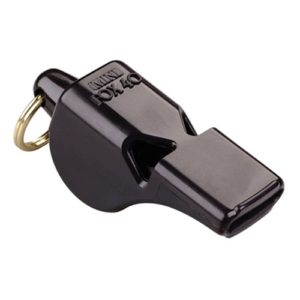Fox 40 Whistles
Fox 40 was created out of necessity when its founder, Ron Foxcroft, pivoted from a football career-ending injury to become a part-time basketball referee. Despite his success in officiating professional and Olympic basketball games, Foxcroft was often frustrated with his most essential tool: the whistle.
The primary issue was the pea, a small ball inside the whistle that produces the sound by causing vibration, frequently getting stuck and rendering the whistle useless. Additionally, the whistle’s sound was often too soft to be heard over the crowd’s noise. In professional sports, a malfunctioning whistle could result in missed calls, damaging a referee’s reputation and causing rule violations. A notable incident occurred during the Montreal Olympic finals, when Ron’s whistle failed in front of 18,000 spectators, preventing him from calling a foul on a Yugoslavian player who elbowed a U.S. team member.
Determined to find a solution, Foxcroft developed a wishlist for the perfect whistle and collaborated with a plastics molding company. After numerous failed attempts, the Fox 40 pealess whistle was born. It produced a sound similar to traditional whistles but was louder and immune to pea malfunctions. The Fox 40’s durability was enhanced by a plastic molded injection process that welded the whistle together, eliminating the need for glue.
In 1987, the Fox 40 made its debut at the Pan Am Games in Indianapolis, Indiana. Its innovative design quickly gained attention, even from the Indianapolis police. By 1990, the whistle was being used by the NHL, NCAA, NFL, AFL, CFL, and in numerous Olympic and World Championship events. Today, the Fox 40 pealess whistle is favored by sports officials and enthusiasts of all kinds, including dog owners.
Showing the single result






